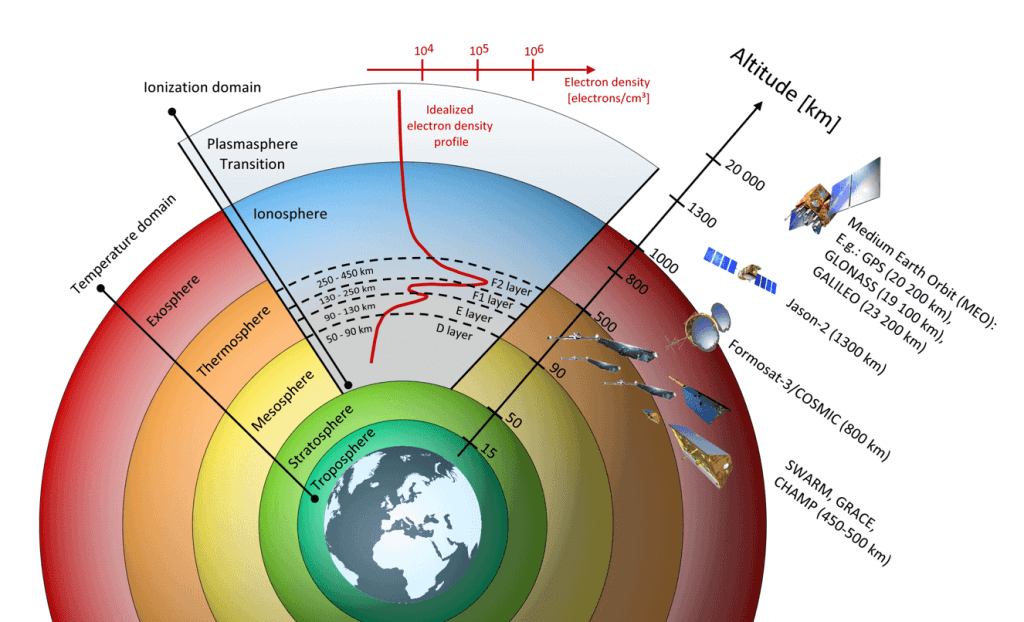Atmospheric Products
How can space geodetic techniques observe the atmosphere?
Observations of ground- and satellite-based space geodetic and Earth observing techniques, such as GNSS, VLBI, SLR, DORIS, radar altimetry, and synthetic aperture radar (SAR), are typically based on the observation of electromagnetic signals that cross the Earth’s atmosphere. The signals experience propagation delays and the observing paths are slightly bent due to atmospheric refraction. These delays, in turn, provide valuable information about the atmosphere.
According to its propagation characteristics, the atmosphere is typically divided into two compartments:
- Neutral Atmosphere: Up to altitudes of about 50 km, the lower neutral atmosphere covers the troposphere and the stratosphere that together contain 99% of the water vapor and aerosols.
- Ionosphere (electrically charged): Above the neutral atmosphere, the ionosphere is the ionized part of the Earth’s upper atmosphere. It ranges from about 50 km to 1,000 km altitude and extends into plasmasphere (see Figure).
- An important part of ionosphere is the:




